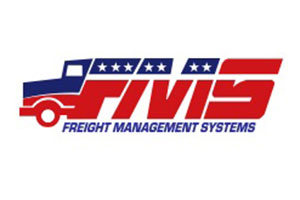Senior Reporter
For Freight Brokers, Managing Data Key as Volume Grows, Experts Say

[Stay on top of transportation news: Get TTNews in your inbox.]
Artificial intelligence and machine learning are two expanding means logistics companies can use to gather and process tremendous amounts of data surrounding freight shipments.
Predictive analytics, natural language processing that can read emails and automated data collection are tools, among others, for setting up a digital brokerage network that knows where the right trucks are and where the right loads are, and potentially what to charge for a shipment, experts said.
While this is all relatively new, “we now have platforms to take data and figure out how to use it proactively,” said Henry Sheldon, CEO of Coral Springs, Fla.-based Freight Management Systems Inc. The software development company specializes in transportation management systems and transportation logistics software.

It’s not just taking some data, it’s taking plenty of it and applying predictive analysis through machine learning, he said.
“For example, we are using machine learning internally to predict if loads will be late, learn where the loads are, where the trucks are,” Sheldon said. “We are setting up networks with our brokers to share this data.”
He and other speakers made their remarks at the TIA 2021 Capital Ideas Conference, which was held virtually earlier in May.

Wu (TIA 2021 Capital Ideas Conference)
In terms of load matching, it is all about the data points, said Tony Wu, co-founder and chief technology officer for Parade, whose stated goal is to digitally transform freight brokers.
Parade uses different data silos such as emails, historical loads and carrier onboarding data (the process of adding a carrier) to identify which carrier has a truck ready for every load.
AI-enriched carrier profiles also provide the means to automatically send targeted opportunities to re-engage and reuse top carriers, according to San Francisco-based Parade. Also, it allows brokers to compare historical and real-time pricing information to bid and negotiate on requests for proposals, and accept freight based on current capacity knowledge — including carrier locations, capacity and availability.

Brookins
It’s not just about offering more information, “but providing smarter targeted offerings to carriers, giving them information that is important to them,” said Barry Brookins, director of data science for McLeod Software, a transportation management software provider of since 1985.
Those offerings include where rates have been and where they are going, he said.
“One of the things we saw quite a bit last year, and even now, was brokers were getting higher rates than they have ever gotten before,” Brookins said, “but they were losing money on those loads because of what they had to pay the carrier. They were taking loads that they thought were winners and they had already lost on those.”
Brookins said that eventually companies considering rates on loads could get to the point where they have faith in the system and take the automated system’s word on accepting it or not.
“But we are not quite there yet,” he said. “Right now, we are focusing on helping our customers know what is good, what is bad about those loads, and eventually get to the point where we can automate as much of that as they like.”

Armstrong
Armstrong & Associates President Evan Armstrong, the session’s moderator, said he knows there are some shippers that have APIs (application programming interface), some brokers’ TMS, in which they are handling the whole quoting and confirmation process through APIs and it is happening automatically.
Sheldon maintained that to ever say a TMS, right now, is going to be able to come back and give the exact quote on a lane is really hard.
“All we can do is give you a great guess,” he said.
Armstrong said, “A great guess is pretty good sometimes.”
Brookins agreed it is hard to do.
“One of the things we are concentrating on is more of a prescriptive approach,” he said. “Instead of saying to them charge $1.80 for this lane in two months, we tell them these are the type of loads that make you money, these are the ones that don’t. Get more of these, less of those.”
It boils down to learning from the data.
“Data is so important to this industry,” Parade’s Wu said, “and the amount of data in load matching has really grown exponentially in the recent years.”
Want more news? Listen to today's daily briefing below or go here for more info:




